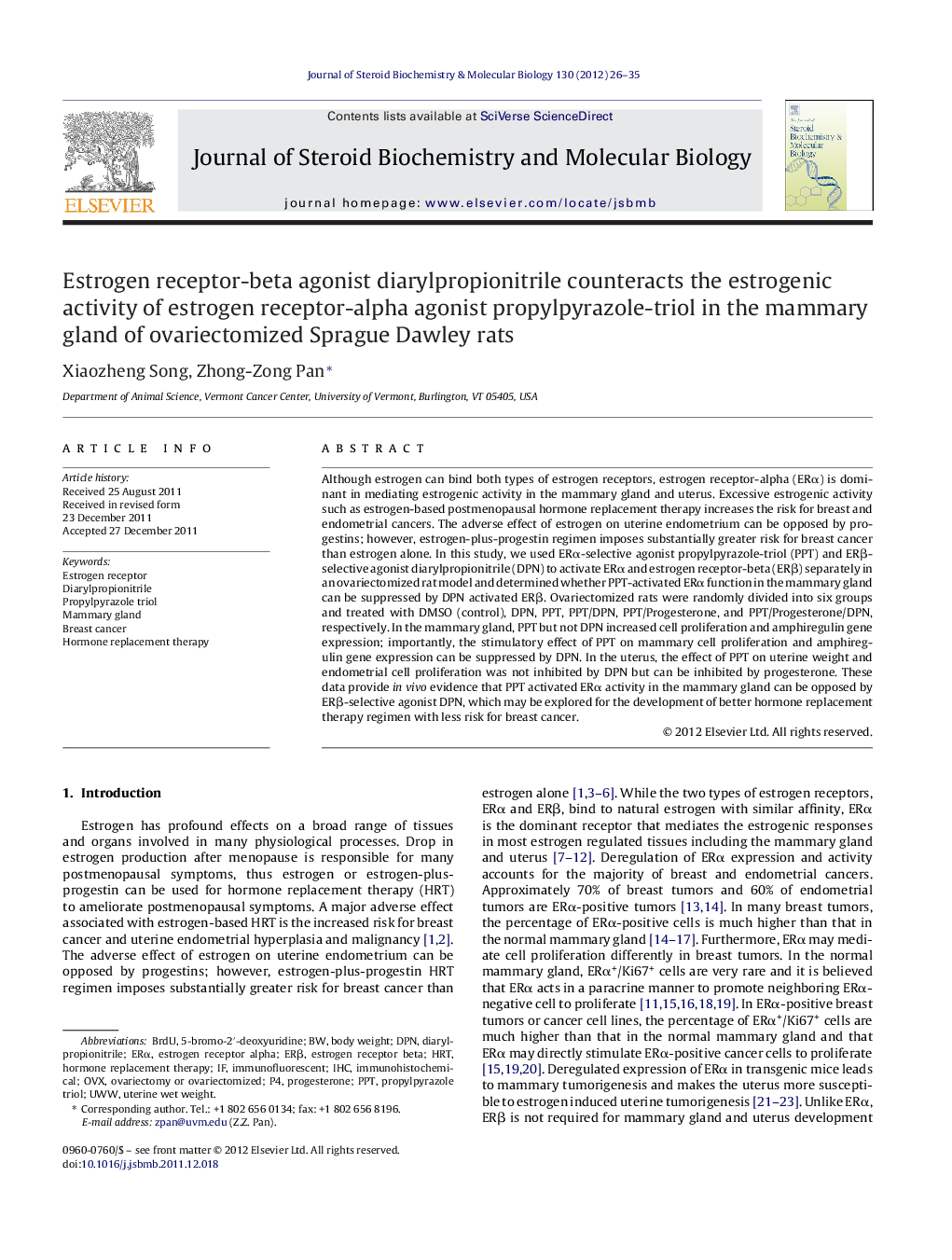| Article ID | Journal | Published Year | Pages | File Type |
|---|---|---|---|---|
| 1991675 | The Journal of Steroid Biochemistry and Molecular Biology | 2012 | 10 Pages |
Although estrogen can bind both types of estrogen receptors, estrogen receptor-alpha (ERα) is dominant in mediating estrogenic activity in the mammary gland and uterus. Excessive estrogenic activity such as estrogen-based postmenopausal hormone replacement therapy increases the risk for breast and endometrial cancers. The adverse effect of estrogen on uterine endometrium can be opposed by progestins; however, estrogen-plus-progestin regimen imposes substantially greater risk for breast cancer than estrogen alone. In this study, we used ERα-selective agonist propylpyrazole-triol (PPT) and ERβ-selective agonist diarylpropionitrile (DPN) to activate ERα and estrogen receptor-beta (ERβ) separately in an ovariectomized rat model and determined whether PPT-activated ERα function in the mammary gland can be suppressed by DPN activated ERβ. Ovariectomized rats were randomly divided into six groups and treated with DMSO (control), DPN, PPT, PPT/DPN, PPT/Progesterone, and PPT/Progesterone/DPN, respectively. In the mammary gland, PPT but not DPN increased cell proliferation and amphiregulin gene expression; importantly, the stimulatory effect of PPT on mammary cell proliferation and amphiregulin gene expression can be suppressed by DPN. In the uterus, the effect of PPT on uterine weight and endometrial cell proliferation was not inhibited by DPN but can be inhibited by progesterone. These data provide in vivo evidence that PPT activated ERα activity in the mammary gland can be opposed by ERβ-selective agonist DPN, which may be explored for the development of better hormone replacement therapy regimen with less risk for breast cancer.
Graphical abstractFigure optionsDownload full-size imageDownload as PowerPoint slideHighlights► PPT but not DPN increases mammary cell proliferation and amphiregulin expression. ► The estrogenic activity of PPT in the mammary gland can be opposed by DPN. ► PPT but not DPN increases uterine wet weight and endometrial cell proliferation. ► The estrogenic activity of PPT in the uterus can be opposed by progesterone. ► DPN and progesterone do not interfere with each other for their opposing functions.
